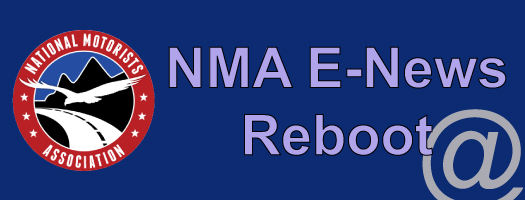
This weekly post features recent news stories that highlight and update themes previously covered throughout NMA E-Newsletters and Alerts.
Editor’s Note: The Orange County, Florida, Board of Commissioners recently decided to refund $41,080 worth of red-light camera citations issued at one intersection between August 2012 and May 2013. It turns out the 4.0 second yellow-light duration was below the state minimum of 4.3 seconds. Additional analysis revealed other irregularities over time but also one of the great truths of red-light cameras: longer yellow-light times significantly decrease infractions. When the yellow light was further increased to 5.9 seconds in late 2013, violations plunged 91 percent and have remained steady since. Needless to say, lower violation rates reduce profits and ultimately make red-light cameras unfeasible. The NMA has documented this dynamic many times over the years, as in this newsletter from 2010.
NMA Email Newsletter: Issue #64: The Magic of Yellow
Or, perhaps the title should be, “The Magic of Time.” All it takes to expose the fallacy of red-light camera programs is 0.5 to 1.5 seconds. About the time it takes you to swallow a gulp of water. Less time than it takes to tweet a short message to friends. Well, for most of us anyway.
Several years ago, two researchers with the Texas Transportation Institute (Bonneson and Zimmerman) concluded that, “. . . an increase of 0.5 to 1.5 s in yellow duration (such that it does not exceed 5.5 s) will decrease the frequency of red-light-running by at least 50 percent . . .”
That conclusion has been borne out repeatedly. Loma Linda, CA increased its yellow light intervals by one second and saw straight-through red-light running violations drop by 92%. Several cities in Gwinnett County, GA put their red-light camera programs on hiatus after the state mandated the addition of one second to the yellow cycles at all camera intersections. One Gwinnett city saw the number of violations drop to 300 in the first month of the longer yellow lights as opposed to 1500 for the same time period a year earlier. The mayor of Dalton, GA became a folk hero of sorts by leading the charge to shut down the city’s ticket cameras after seeing a similar 5:1 reduction in photo tickets after the longer yellow light ruling.
The City of Chicago, which rakes in an estimated $59 to $64 million each year in ticket revenue, is the financial wunderkind of red-light cameras programs. Their yellow intervals are set at 3.0 seconds, the bare minimum suggested by the federal Manual on Uniform Traffic Control Devices. Plugging the typical Chicago 30 mph posted speed limit — which is conservative considering that the intersection approach speeds are generally higher — into the yellow interval duration formula developed by the Institute of Transportation Engineers, one finds the recommended yellow light duration to be 3.2 seconds for an intersection with a level grade. (The NMA recommends 3.5 seconds for this case.)
Per Bonneson and Zimmerman, Chicago would be able to reduce red-light running violations by 50% or more by increasing their yellow intervals to between 3.5 and 4.5 seconds. Despite prodding by the NMA, and especially NMA Activist Barnet Fagel, the Chicago Department of Transportation is steadfast in maintaining their scant 3.0 second standard. The NMA recently sent a letter to The Chicago Tribune Editorial Board, suggesting that the Board exercise its leadership position by issuing an editorial that calls for an experimental increase in the yellow light intervals to 3.5, 4.0 and 4.5 seconds respectively at three high volume Chicago red-light camera intersections. The results would be monitored by either the Tribune or another independent party.
Such an experiment will put a huge amount of revenue at risk for the city, so it will be surprising to see the Tribune write such an editorial or to have Chicago’s DOT follow through if such an editorial is published. As the NMA letter to the Tribune states, “Yes, the City of Chicago is likely to lose many millions of dollars in ticket camera revenue (if longer yellow light durations are adopted), but improved traffic safety and public trust will be more than adequate compensation.”
We’ll see if revenue or safety wins out in Chicago.






